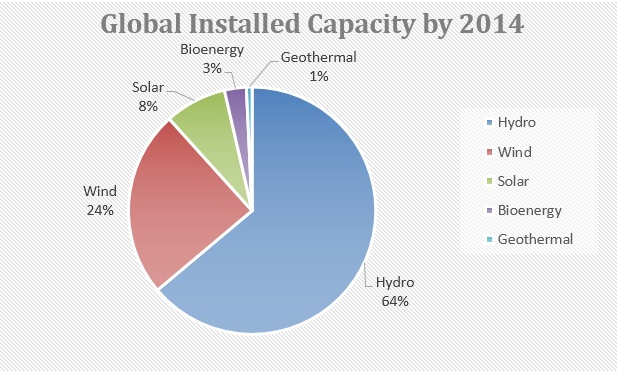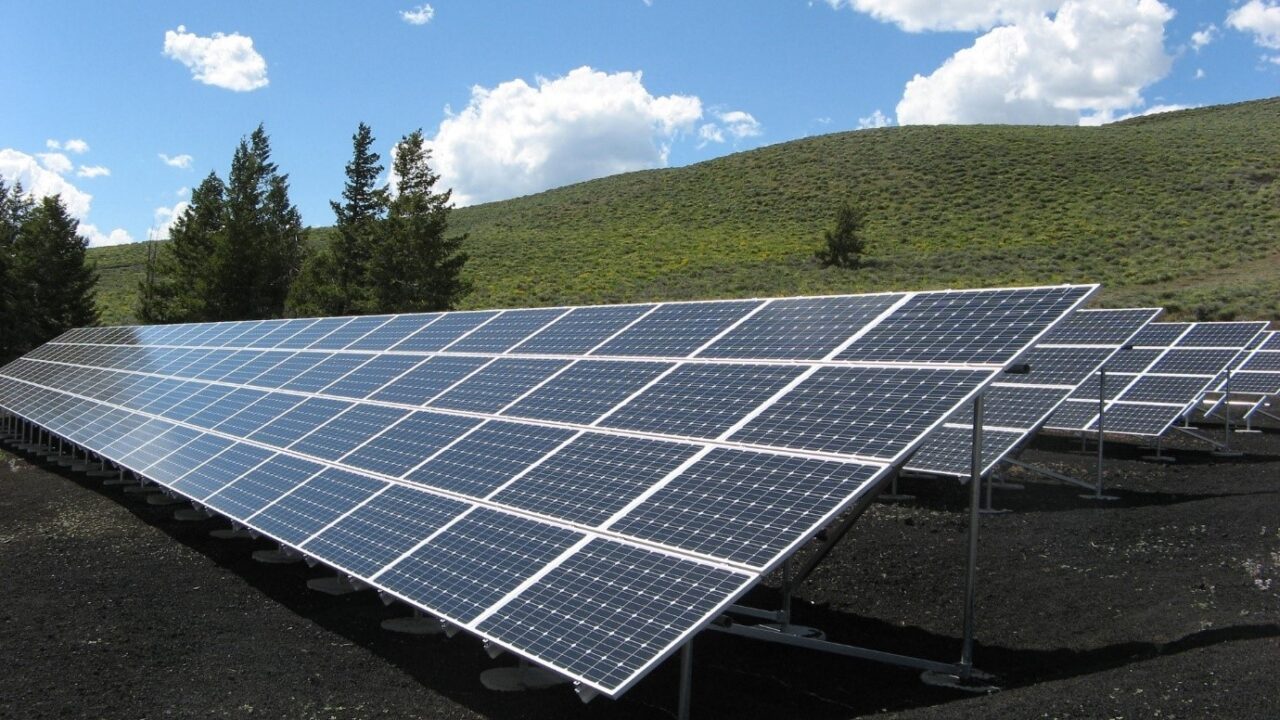It is no longer in doubt that the global energy landscape is undergoing transformation. Renewables are displacing or replacing fossil fuels in response to climate change. Albeit slowly and amidst hurdles, solar, wind, geothermal, and other renewable technologies are gaining traction in pursuit of a sustainable, zero-carbon future.
In 2014, the International Renewable Energy Agency (IRENA) reported that the global renewable power sector achieved a significant milestone with a record high of 133 GW in net additions. However, there are limitations to the adoption of renewables, including high cost, raw material availability, and land usage concerns. By examining both the strengths and limitations of renewable energy, countries can chart a course toward a greener energy landscape that balances progress with environmental responsibility.

Source: Altenergymag
The pros of renewable energy
Renewable energy sources present a compelling solution to pressing environmental challenges. Unlike traditional fossil fuels like natural gas, renewable sources produce minimal to zero greenhouse gas emissions, resulting in a smaller carbon footprint and a positive impact on the environment. Fossil fuel combustion contributes significantly to climate change and its associated consequences, including heightened global temperatures and more frequent extreme weather events. By embracing renewable energy such as solar, wind, hydroelectric, and geothermal power, we can substantially reduce emissions during operation, mitigating climate change and enhancing air quality.
Additionally, the use of renewables minimizes harmful pollutants that cause respiratory and cardiac health issues, fostering a healthier atmosphere and contributing to a cleaner and more sustainable planet. Renewable energy technologies offer a natural, cleaner approach to energy generation, significantly reducing carbon emissions and greenhouse gas outputs when compared to fossil fuels, thus effectively addressing critical environmental concerns such as global warming, climate change, and air pollution.
Energy security and independence
Renewable energy stands as a crucial linchpin in bolstering global energy security by multifaceted means. Through diversifying the energy mix and diminishing reliance on imported fossil fuels, nations not only fortify their energy resilience but also shield their economies from the capricious fluctuations of international energy markets and geopolitical tensions. The integration of diverse renewable sources—solar, wind, hydro, geothermal, and biomass—not only establishes a robust foundation for energy supply but also serves as a strategic hedge against potential shocks such as natural disasters or cyberthreats. This not only mitigates vulnerability to supply disruptions and price volatility but also fosters an environmentally sound and decentralized energy paradigm, ushering in a more secure and stable energy future.
Job creation and economic growth
Renewable energy stands as a robust driver of job creation and economic growth, notably within the realm of green jobs. This impact is evident through exemplars like solar photovoltaic cells, landfill gas, and biomass plants, which showcase a higher job creation effect per unit of energy produced compared to conventional sources. The extended supply chains, intensified labor requirements, and increased net profit margins inherent to these renewables substantiate their capacity for employment generation. These green jobs span diverse sectors, including manufacturing, distribution, chemical production, project management, installation, operation, maintenance, and even community engagement. Women and youth find enriched opportunities in the agricultural sector, particularly in biomass harvesting. Moreover, renewable energy projects stimulate job creation in project management, education, and community outreach, amplifying local development and economic vibrancy. This comprehensive influence spans the technical realm, from specialized roles in solar panels, wind turbines, and energy storage systems, to the realms of research and development, policy, finance, law, and gender-inclusive community engagement. This convergence of green jobs nurtures a sustainable global workforce, propelling job markets while advancing environmental objectives.
Technological advancements
Renewable energy plays a pivotal role in propelling significant technological advancements by stimulating innovation across diverse domains. The current impetus for progress has resulted in remarkable strides, encompassing augmented energy conversion efficiency, advanced energy storage solutions, refined grid management and integration, and optimized designs for wind turbines and hydropower systems. With the global shift towards green growth, nations are realigning economic structures to embrace renewable advancements, harnessing the transformative potential of the Fourth Industrial Revolution (4IR). This integration of green technologies has led to breakthroughs in material science, yielding lightweight and adaptable solar panels, while bioenergy innovations are converting organic waste into valuable biogas and biofuels. The infusion of data analytics and artificial intelligence has further amplified the efficiency and reliability of renewable energy systems. Ultimately, the pursuit of renewable energy not only catalyzes revolutionary energy production but also ignites broader technological progress across a spectrum of industries.
The cons of renewable energy
Just as there are advantages inherent in renewables as alternative energy sources, there are also disadvantages. These include the following:
Intermittency and reliability
The challenge of intermittency and reliability in integrating renewable energy into traditional power grids arises due to their fluctuating nature conflicting with the grid’s design for steady generators. This leads to complex operational planning adjustments, particularly for intermittent sources like solar and wind, necessitating adaptations across various timeframes.
Solar energy’s intermittency, only produced during daylight hours, adds to social costs and requires constant re-optimization for electricity system operators. As the share of renewables increases, their inherent variability – intermittency – becomes more pronounced, impacting the entire system’s reliability.
This is exacerbated by weather-dependent outputs from wind and solar energy. To maintain a steady supply, substantial energy storage is needed, while unpredictability caused by cloud cover and changing wind patterns introduces further challenges, demanding continuous interventions by grid operators. Amid these complexities, strategies to manage growing intermittency and uncertainty within renewable energy sources must be implemented.
Initial costs
An inherent drawback of renewable energy lies in its initial cost of deployment, which poses a significant challenge. To counter the intermittency of renewable sources, effective energy storage systems are imperative, yet the expense and scalability of large-scale storage solutions remain problematic. Establishing renewable energy generation facilities demands substantial financial investment. Setting up wind turbines, solar panels, and hydroelectricity plants involves high upfront costs, maintenance expenses, and meticulous planning. For instance, the installation of new onshore wind facilities costs around $46 per megawatt-hour, while large-scale solar plants come in at $45 per megawatt-hour. In contrast, new coal-fired plants incur costs of $74 per MWh, with gas plants at $81 per MWh. While the long-term benefits of reduced operational and maintenance costs are evident, the substantial initial outlay can impede the adoption of renewable technologies, often necessitating financial incentives for governments, businesses, and individuals to overcome this barrier.
Environmental impact
Renewable energy technologies, while offering a more environmentally friendly alternative to fossil fuels, are not immune to causing negative environmental impacts. Their transition from fossil fuels, driven by the goal of reducing harm, can lead to unintended consequences. Within the manufacturing and transport sectors, these technologies can generate emissions and pollutants, even introducing toxins into water resources through processes like photovoltaic cell production. The installation of renewable energy systems can disrupt ecosystems and habitats, affecting land use and wildlife. Specific renewable technologies, such as certain bioenergy forms, can exacerbate water scarcity issues due to their substantial water consumption. Additionally, hydropower projects can disrupt river ecosystems and cause flooding, wind energy may harm birds and bats, solar power can induce habitat loss and erosion, bioenergy can release harmful emissions, and geothermal power may lead to toxic gas emissions and seismic activity. To achieve a sustainable energy future, it is crucial to consider and mitigate these negative impacts associated with renewable energy adoption.
Conclusion
In conclusion, renewable energy sources offer a promising path toward addressing the global energy challenge while mitigating environmental impacts. The pros of renewable energy, such as reduced greenhouse gas emissions, energy security, job creation, and technological advancements, highlight their potential to revolutionize the energy landscape. However, the cons, including intermittency and reliability issues, initial high costs, and potential environmental impacts, call for careful consideration and effective strategies to overcome these challenges.
To navigate this evolving landscape, governments, industries, and communities should collaborate to prioritize research and development of advanced energy storage solutions, promote financial incentives for renewable adoption, and implement robust environmental safeguards. By embracing renewable energy’s advantages and addressing its limitations, we can transition towards a sustainable energy future that harmonizes progress with environmental stewardship.
Found it interesting and would like more in the mail?




